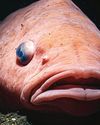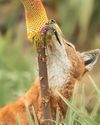
Located in Cambodia, a country in southeast Asia, Angkor Wat is the world’s largest temple, and a hugely important historical site. It stands within the ancient city of Angkor, which was one of the biggest cities in the world in the 13th century. Angkor was much bigger than the largest cities of Europe that existed at the same time.
Despite Angkor’s great size and importance, the site is shrouded in mystery. Little is known about its past and even its original name has been forgotten. The temple’s modern name, Angkor Wat, simply means “city temple” in Khmer (Cambodia’s official language). At one point, the city was abandoned, and no one knows why or what happened to the people who lived there. Let’s take a journey through the mists of time, and see how science has tried to uncover the secrets of this ancient monument.
A mega city
Angkor Wat was built to house the remains of a king called Suryavarman II after his death. The temple was completed around 1150, shortly after the king’s death. It was designed to be a version of heaven on Earth, with lots of incredible carvings and decorations.
هذه القصة مأخوذة من طبعة Issue 78 من The Week Junior Science+Nature UK.
ابدأ النسخة التجريبية المجانية من Magzter GOLD لمدة 7 أيام للوصول إلى آلاف القصص المتميزة المنسقة وأكثر من 9,000 مجلة وصحيفة.
بالفعل مشترك ? تسجيل الدخول
هذه القصة مأخوذة من طبعة Issue 78 من The Week Junior Science+Nature UK.
ابدأ النسخة التجريبية المجانية من Magzter GOLD لمدة 7 أيام للوصول إلى آلاف القصص المتميزة المنسقة وأكثر من 9,000 مجلة وصحيفة.
بالفعل مشترك? تسجيل الدخول

Are cats smarter than dogs?
They're the UK's top pets, but which is more intelligent? You decide!

Could people turn Mars into another Earth?
Sven Bilén explores how humans might make a home on another world.

FUNNY BY NATURE
Claire Karwowski tracks down the wackiest wildlife that's cracking up the animal kingdom.

WEIRD SCIENCE
A round-up of the strangest science stories from around the world.

Guardians of the forest
Meet the incredible people protecting the Amazon rainforest.

The Mariana Trench
Dive in to find out how far down the ocean goes and what it's really like at the bottom.

Megan McCubbin
Meet the zoologist trying to change people's views of animals with a bad rep.

MAX POWER
From the second you wake up in the morning, your way of life is made possible thanks to the amazing power of electricity.

Your heart has a "brain"
New research by scientists at Sweden, and Columbia University, in the US, suggests that your heart could have its own \"mini brain\".

Ethiopian wolves could be furry pollinators
Sweet-toothed Ethiopian wolves have been seen lapping up nectar have been seen happing up nectar from red hot poker flowers.